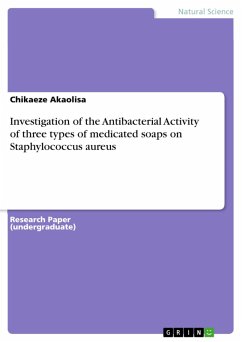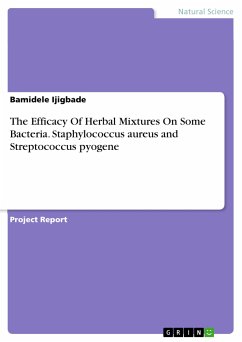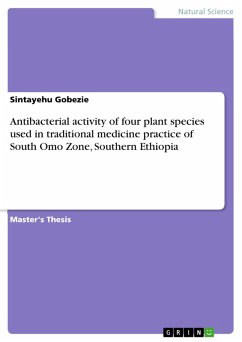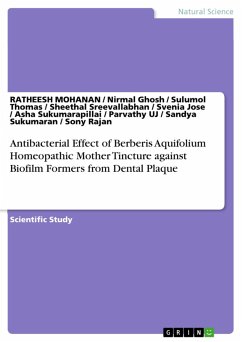Research Paper (undergraduate) from the year 2018 in the subject Biology - Micro- and Molecular Biology, grade: 3.0, University of Buea, course: Microbiology, language: English, abstract: Following invasion of the human body by bacteria, most bacteria produce substances that are toxic to the human body. In the fight against these infections, the production of antibacterial substances (synthetic compounds of different forms) has been a major step in solving this problem. In this study, three medicated soaps: Dettol, Pharmapur and Tetmosol were investigated for their antibacterial activity at different concentrations against Staphylococcus aureus using the disc diffusion method. Saline was used as a negative control and a readymade antibiotic impregnated disc (Ciprofloxacin) was used as a positive control. Bacterial identification was by standard microbiological techniques which included: Colonial examination, Gram staining and biochemical testing. Dettol medicated soap had the highest antibacterial activity (26mm at 1/10 soap dilution) while Tetmosol showed the least antibacterial activity (6mm at 1/103 soap dilution). S. aureus was found on 4 of the 6 samples that were analysed giving a prevalence of 66.67%. All the medicated soaps showed antibacterial activity which depended on the concentration (dilution) of soap sample on S. aureus; hence, the use of antibacterial soaps is recommended as a means of reducing risks of transmission and infection by bacteria.
Dieser Download kann aus rechtlichen Gründen nur mit Rechnungsadresse in A, B, BG, CY, CZ, D, DK, EW, E, FIN, F, GR, HR, H, IRL, I, LT, L, LR, M, NL, PL, P, R, S, SLO, SK ausgeliefert werden.









